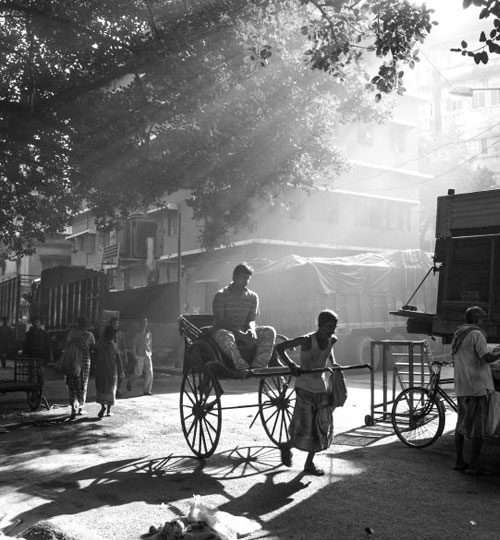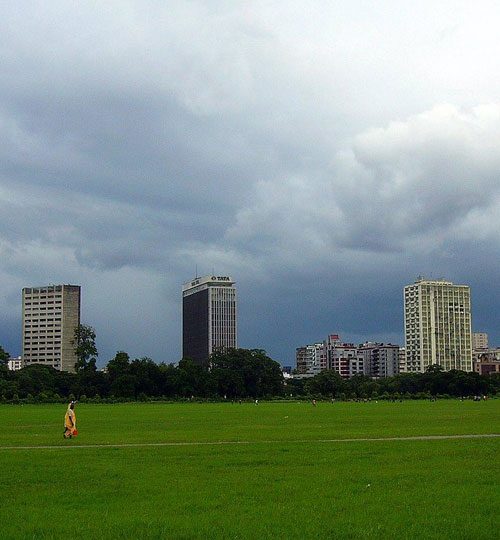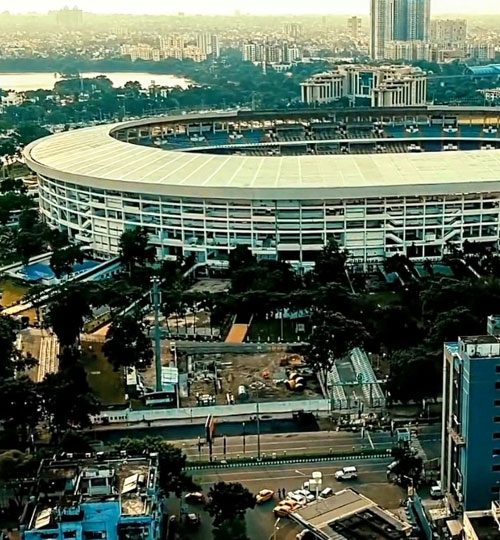Kolkata
Kolkata
It is the capital of the Indian state of West Bengal and the most important city of Eastern India. Situated on the eastern bank of the Hooghly River, the city is often referred to as the cultural capital of the country. It was the Capital of British India till 1911. During British times the city was called Calcutta. In 2001 the name was changed to Kolkata which is the original Bengali name. It is one of the earliest trading posts of the British East India Company. Kolkata has a unique blend of contrasts and this contrast along with her rich heritage covering every sphere of life has made it a great city. Kolkata is a collage of colours, buildings, lanes, roads, moods, personalities and images. The city is also often referred to as the city of Joy.
Brief History
There were three villages in the area. One was Govindapur, another was Dihi Kalikata and another one was Sutanuti. It is in Sutanuti where Job Charnock landed in the year 1690. Though there is always a debate about the exact year of the arrival of Charnock here. The East India Company started gaining momentum in the business and soon became a force in the region. After the battle of Plassey where the British defeated the then Nawab of Bengal Siraj-ud-daulla, they took total control of the area. The Moghul empire gave the company the Diwani right (right to collect revenues and administer justice). Soon East India Company became the real powerhouse in the region. They started building the city as their capital. The three villages eventually merged up and Kolkata emerged. Most of the white township flourished in the Dalhousie area Park Street in the south and the Alipore area. The present North Kolkata was mainly the native quarter of the city. Kolkata soon became a melting pot of different communities. Along with the local people and the ruling Britishers, the Jews Parsis and Chinese settlers started settling in the city and actively took part in its development of the city. They were called enterprising immigrants. Kolkata during that time was the second most important city of the British Kingdom after London.




Attractions
St. John’s Church
This is one of the oldest churches in the city. The church was completed and inaugurated in the year 1787. The foundation stone was laid by the then Governor General Warren Hastings in the year 1783. This outstanding building was built with a combination of Brick and Stone. This was built apparently along the lines of St Martin in the fields of England. The main architect of this church is James Agg. Not only the church but rather the entire compound is a piece of History. The church houses a lot of memorial tablets to soldiers, clergy, doctors and some other prominent citizens of then Kolkata. Inside the church, another major attraction is a beautiful painting by Johan Zoffany. The painting is called the Last Supper. It is done keeping in mind the famous ‘Last Supper by Leonardo Da Vinci, though the painting is not a replica. The St John’s church compound has some very important historical memorials and tomb-like ‘The Black Hole Memorial’, ‘Rohila War Memorial’, ‘The Memorial of Lady Canning’ and the ‘Tomb Of Job Charnock’.
Ochterlony Monument
This nearly 160-foot-tall Snow-white monument is a very common landmark of the city. Currently, it is known as Shaheed Minar. Originally this was a memorial to Sir David Ochterlony who led the British forces in several wars and was known for his dedication to the army. Presently the monument is renamed as Shaheed Minar and dedicated to the ‘Martyrs’ of the Indian freedom movement ‘’.
Town Hall
The town hall was opened to the public on the 22nd of March in the year 1874. The foundation stone was laid by Lord Minto. This gigantic heritage building is another example of the glorious history of Colonial Kolkata. The building was mainly built with the help of public subscriptions and was mainly used for social gatherings, official and public meetings etc. This building houses a museum inside and a storytelling guided tour was a part of it which showcases the history and heritage of Kolkata.
Maghen David Synagogue
The Jewish community was called the enterprising immigrants of Kolkata. Maghen David Synagogue was built in the year 1884. This building is currently maintained by ASI. The interiors of this synagogue are very well-maintained and stunningly beautiful. The side walls of this beautiful and historic building have some memorial plaques dedicated to some eminent Jewish people of then Kolkata.
Howrah Bridge
The most prominent landmark of the city. It is said that the tour of Kolkata is incomplete without a glimpse of the Howrah Bridge. This is one of the busiest cantilever bridges in the world and truly an engineering marvel. It was built on the holy river Ganges (the name of the river is Hoogly in Kolkata) and it connects the city of Kolkata to the city of Howrah. This legendary landmark was opened to the public in the year 1943. Earlier it was an open pontoon bridge.
Victoria Memorial
This is another celebrated landmark of the city. The foundation stone was laid by King George V in 1906 and it was completed in the year 1921. Set amid a huge compound this building is a symbol of architectural beauty and imperial grandeur. The idea of such a memorial was first conceived by Lord Curzon who wanted to dedicate this to Queen Victoria. The building was designed by Sir William Emerson. The Taj Mahal is one of the most famous Marble monuments in the country. Victoria Memorial houses the galleries inside the building and the beautiful well-maintained garden outside the building. Inside the Galleries, one can see the extraordinary collections of paintings, pictures, statues, weapons and a lot of other historically significant items.
St Paul’s Cathedral
It was built in the year 1847. It is a huge building and the Gothic architecture has made it one of the finest structures in the city. It was originally made in the line of Norwich Cathedral in England. This is a very popular church in the city. Regular prayers take place here.
Kalighat Temple
The most famous temple in the city. It is one of the 52 Shakti Peetas of India. The present temple was constructed in the year 1809. The actual date of the construction of the original Kali temple is not clear. The mention of the Kalighat Kali temple was found even in 15th-century literature. This age-old temple is associated with several legends and stories. The temple is always crowded with devotees.
Jain Temple
This was built in the year 1867. Situated at Badridas temple street in north Kolkata this temple is named after Sitalnath who is one of the Jain Tirthankars. The interior of the temple is quite attractive. This temple has got a large compound which is well maintained. There is a small pond there and some statues are there in the compound.
Indian Museum
Founded in the year 1814 this is the oldest and largest multipurpose Museum in the entire Asia Pacific Region. It was originally founded at the location of the present Asiatic Society. Till 1878 the museum was there. The construction of the present building was completed in the year 1875. On 1st April 1878, the door of the present museum was opened to the public. This was initially known as the Asiatic Society Museum and then the Imperial Museum. Finally, it is named as Indian Museum. The museum has many Galleries and a wide range of collections inside every Gallery. This remains one of the major attractions of Kolkata.
Mother House
One of the most famous personalities of the city, Mother Teresa stayed here from 1953 to 1997 till her death. The motherhouse has a Mother’s Tomb in a room. People offer their prayers here. The adjacent room has got a museum. Upstairs, Mother’s room is well maintained and accessible to the visitor.
Jorasanko Thakur Bari
This was the home of the famous son of Kolkata Rabindranath Tagore. This is the ancestral house of the famous Tagore family. This building was constructed in the year 1784. The building houses the museum which comprises many collections related to Rabindranath and other family members. The museum houses some remarkable paintings too and has Galleries where Rabindranath’s Japan and China visits are celebrated through several pictures and memorabilia.
Best Time to Visit
The Best Time to Visit Kolkata is between October to March. The weather here is quite hot and humid, especially in Summer.
Getting There
Kolkata is well connected with the rest of India as well as many countries through rail, road, air, and waterways. Trains and flights to and from almost every major city in India are available. International flights from here connect you to the rest of the world. Direct flights are available to Europe, the Middle East, South East Asian Countries as well as neighbouring South Asian countries.
